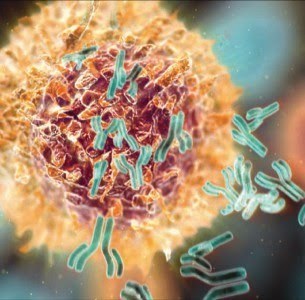Philochem owns five antibody libraries (ETH2-GOLD, PHILO-1, PHILO-2, PHILO-DIAMOND and PHILOtop) that contain over 30 billion different binding specificities.
Philochem’s human antibody libraries (ETH2-GOLD, PHILO-1, PHILO-2 and PHILO-DIAMOND) have been used to generate high-quality binding specificities against >50 different antigens, including human monoclonal antibodies which are currently being developed in clinical trials by Philogen.
Philochem’s antibody libraries contain monoclonal antibodies in scFv format. Once monoclonal antibodies which are specific to the target antigen of choice are isolated, they can be easily reformatted into other recombinant antibody formats (e.g., IgG, Fab, mini-antibody, Fc-fusion) using general vectors and well-established procedures which are available at Philochem.
Via Krishan Maggon



 Your new post is loading...
Your new post is loading...









